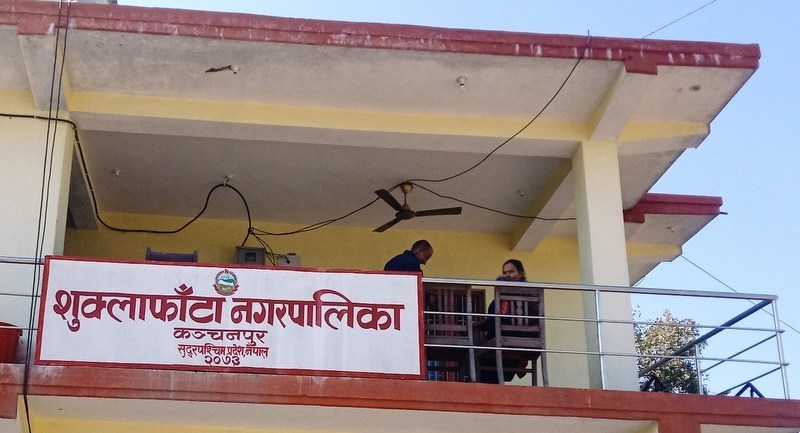

In order to reduce the maternal and infant mortality rate, the Shuklaphanta Municipality has been conducting check-ups at the homes of the women who have given birth at the health facility through health workers. Chief of the health branch of the municipality, Parmananda Bhatta, said that an arrangement has been made for the health workers to visit the house to alleviate the complex condition that may be seen in the health of women and children after delivery.
“The first check-up is done at the health facility within 24 hours of delivery,” he said. “The second check-up is done in three days and the third check-up is done in seven days.” The second and third check-ups have been carried out by the health workers at the home of the pregnant woman. Home-based health workers are called to the nearest maternity or emergency maternity hospital to examine the mother and the newborn, diagnose complications, and send them for treatment.
“When we visit the house, we ask the health worker to prepare a bag for the house visit,” said Bhatta, head of the branch. At least blood pressure and fever measuring equipment, gloves, uterine height measuring tape, flashlight, dressing set, medicine like betadine are being sent to the health workers. ”
Examination of the expectant mother may include excessive bleeding from the genitals, pulse rate, temperature, blood pressure, anemia, hemorrhage, breast examination, swelling of the face and hands, tightness and tightness of the uterus, bleeding or swelling of the genitals, and easy urination by the mother.
If there is excessive bleeding or other dangerous symptoms are found, they are sent to the health institution for treatment. Evaluate the newborn’s color, gait and cry, check the baby’s temperature by touching the legs and abdomen, check for bleeding in the navel and check for infection, check for pus in the skin, signs of jaundice on the forehead, abdomen, hands, and feet. Health workers have been checking whether the milk has been properly sucked, has defecated or not, or whether the navel ointment has been applied.
He said that health workers have been deployed to raise awareness about pneumonia and other diseases in infants along with bleeding in women after childbirth.
Women who have given birth have also been given information on how to feed them nutritious food and breastfeed their babies. A program has been started to deploy health workers in the homes of women who have given birth since last December. According to Senior Aheb Harinath, the health workers have so far visited the homes of 43 women who have given birth in the institutional health institutions and 10 women who have given birth in other health institutions. According to him, the municipality has been providing Rs. 300 as travel expenses as well. According to a survey, there are 21 deaths per 1,000 live births and the death rate within the first 28 days after birth is very high.
Home-born babies have a higher mortality rate due to various infections than those born in health facilities. To achieve the Sustainable Development Goals by 2030, the government plans to reduce maternal mortality to 70 and neonatal mortality to 12. According to the same plan, the local level has been promoting the home visit program for women who are going to give birth.